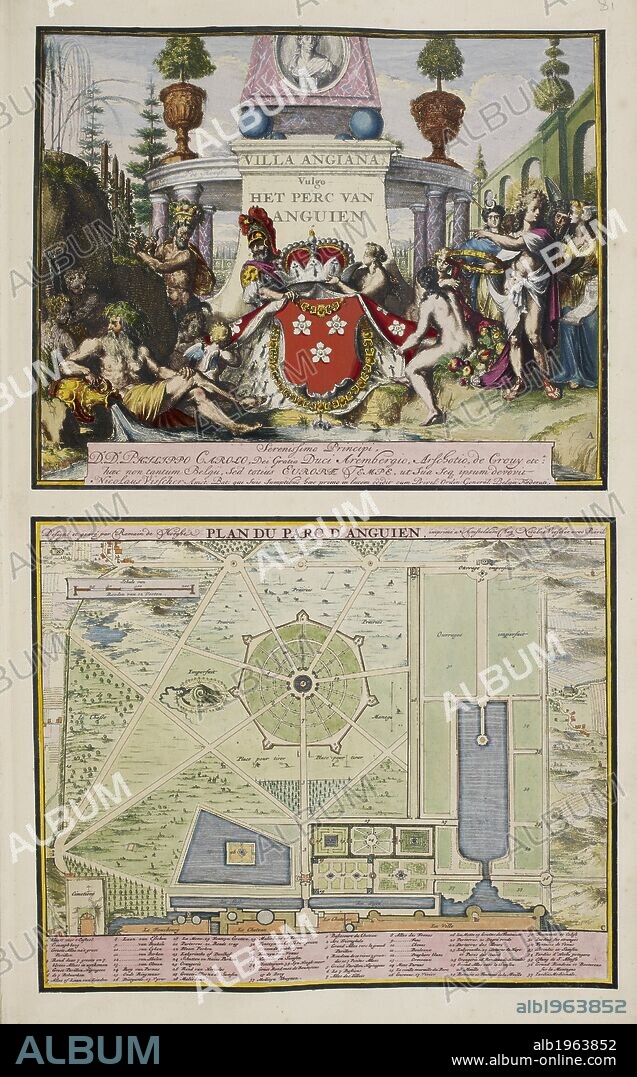alb1963852
ROMEYN DE HOOGHE. Villa Angiana. A Collection of 86 plans and views of The Hague. Amsterdam, 1718. Villa Angiana, commonly known as the Park at Enghien (ca. 1685). On this title page, the arms of Enghien's owner, the Duke of Aremberg, are flanked by classical gods including Apollo and his sister Artemis, the goddess of hunting, while another goddess, wearing the wings of Hermes, the messenger, holds a garden plan. There is a satyr and a river god on the other side and beneath them a dedication to the Duke. Below there is a detailed plan of the park. The plan identifies the main features of the garden and shows how they fitted into the wider landscape. The Duke's palace (Chateau) looks out over the park at the bottom, with the old walled town (ville) to its right and the suburbs (fauxbourg) and cemetery on the other side. Image taken from: A Collection of 86 plans and views of The Hague. Published in Amsterdam, 1718. . Source: Maps.C.9.e.9.(81). Language: Dutch.

|
Add to another lightbox |
|
Add to another lightbox |



Author:
Caption:
Villa Angiana. A Collection of 86 plans and views of The Hague. Amsterdam, 1718. Villa Angiana, commonly known as the Park at Enghien (ca. 1685). On this title page, the arms of Enghien's owner, the Duke of Aremberg, are flanked by classical gods including Apollo and his sister Artemis, the goddess of hunting, while another goddess, wearing the wings of Hermes, the messenger, holds a garden plan. There is a satyr and a river god on the other side and beneath them a dedication to the Duke. Below there is a detailed plan of the park. The plan identifies the main features of the garden and shows how they fitted into the wider landscape. The Duke's palace (Chateau) looks out over the park at the bottom, with the old walled town (ville) to its right and the suburbs (fauxbourg) and cemetery on the other side. Image taken from: A Collection of 86 plans and views of The Hague. Published in Amsterdam, 1718. . Source: Maps.C.9.e.9.(81). Language: Dutch.
Credit:
Album / British Library
Releases:
Model: No - Property: No
Rights questions?
Rights questions?
Image size:
3884 x 6246 px | 69.4 MB
Print size:
32.9 x 52.9 cm | 12.9 x 20.8 in (300 dpi)
Keywords:
BLASON • COAT OF ARMS • COURTYARD • DUTCH • GARDEN • GOD • GREEN SPACE • HERALDIC • HERALDRY • NETHERLANDISH • OPEN SPACE • PARK • PATIO • RECREATIONAL LAND • RELIGIOUS CONCEPTS AND MOVEMENTS • ROMEYN DE HOOGHE • SHIELD OF ARMS • VISUAL WORKS • YARD
 Pinterest
Pinterest Twitter
Twitter Facebook
Facebook Copy link
Copy link Email
Email

